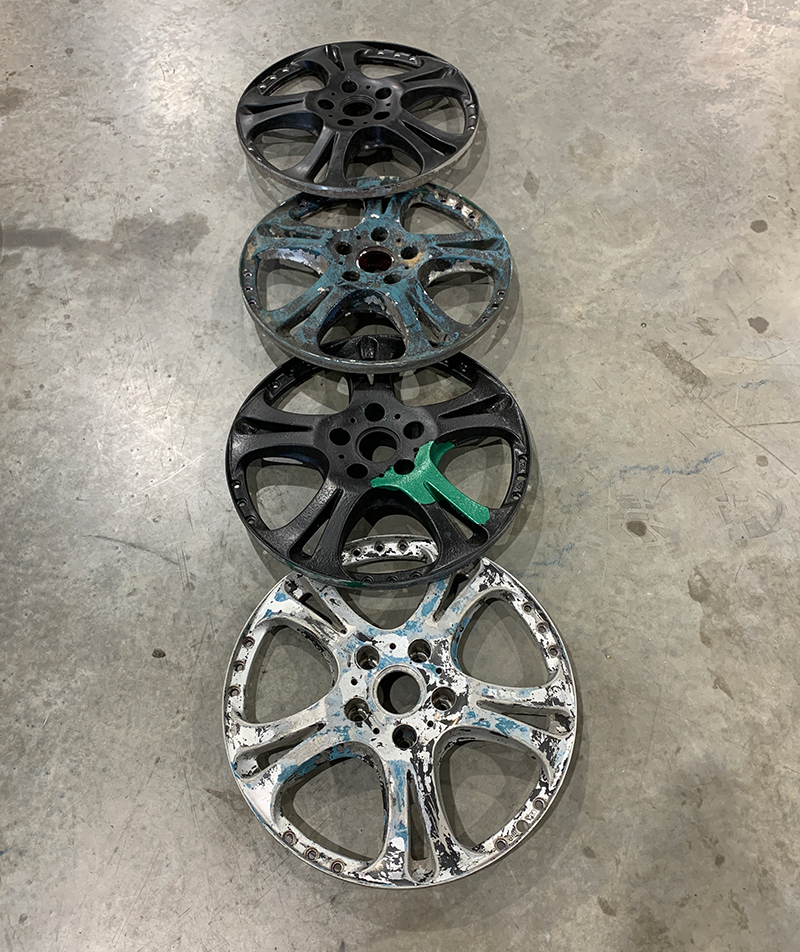We are known for our quality work and fast lead times
Acid Stripping Newcastle
Commercial acid stripping, also known as acid etching or chemical stripping, is a surface treatment method commonly used in industries to remove paint, coatings, rust, and other contaminants from metal surfaces. It involves the application of acid-based solutions to chemically dissolve and strip away the unwanted layers.
What are the benefits of acid stripping?
Benefits of commercial acid stripping include:
- Effective Coating Removal: Acid stripping efficiently removes various types of paint, coatings, and contaminants from metal surfaces, including rust, epoxy coatings, powder coatings, and more.
- Versatility: Acid stripping can be used on different metal surfaces and substrates, making it a versatile method for surface preparation and restoration.
- Precision: Acid stripping allows for precise control over the stripping process. The dwell time and acid concentration can be adjusted to achieve the desired level of removal without damaging the underlying metal substrate.
- Time and Cost Savings: Acid stripping is a time-efficient method compared to manual or mechanical methods of coating removal. It can rapidly dissolve and strip away coatings, reducing labor costs and project turnaround time.
- Surface Restoration: Acid stripping can reveal the original surface condition of the metal, allowing for further inspection, repairs, and subsequent treatments like painting or powder coating.
- Compatibility: Acid stripping can be used on various metal alloys and substrates, including steel, aluminium, brass, and copper, among others.
It’s worth mentioning that while acid stripping can be effective, it requires careful handling and expertise to ensure safety and optimal results. Proper containment, waste disposal, and adherence to safety guidelines are crucial when performing commercial acid stripping.
What is the process of acid stripping?
The process of commercial acid stripping typically consists of the following steps:
- Surface Preparation: Before acid stripping, the metal surface is thoroughly cleaned to remove loose debris, oils, and other contaminants. This step ensures that the acid can effectively penetrate the target material and provide optimal stripping results.
- Acid Application: The acid-based solution is carefully applied to the surface using brushes, sprayers, or immersion methods. The specific type of acid used depends on the type of coating or contaminant being removed. Commonly used acids include hydrochloric acid (muriatic acid), sulfuric acid, or proprietary acid-based solutions.
- Dwell Time: The acid is allowed to dwell on the surface for a specific period to facilitate the chemical reaction and penetration. The dwell time can vary depending on the type and thickness of the coating or contaminant, as well as the ambient conditions.
- Neutralisation: After the dwell time, the surface is thoroughly rinsed with water or a neutralising agent to halt the acid’s chemical activity. This step is crucial to prevent further reaction and ensure the removal of any residual acid from the surface.
- Surface Inspection: Once the acid stripping process is complete, the surface is inspected to verify the removal of the targeted coatings or contaminants. Any remaining residues are addressed before proceeding to subsequent surface treatments.
It’s important to note that commercial acid stripping should be performed with caution and in compliance with safety guidelines. Adequate ventilation, personal protective equipment (PPE), and proper waste disposal practices are essential to ensure the safety of operators and minimise environmental impact.
With bath sizes being 1120mm x 570mm x 400mm, the process is fast and thorough.

